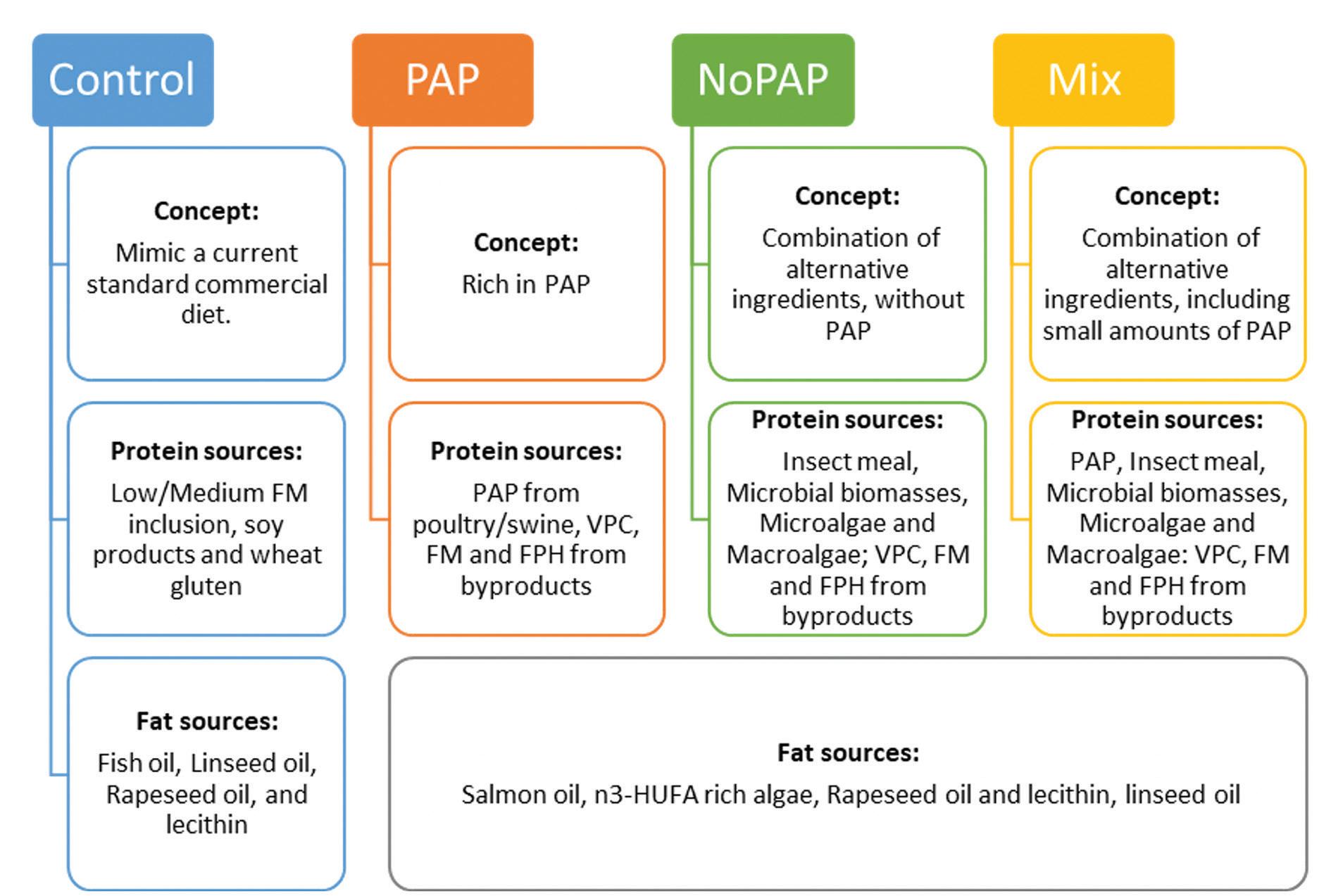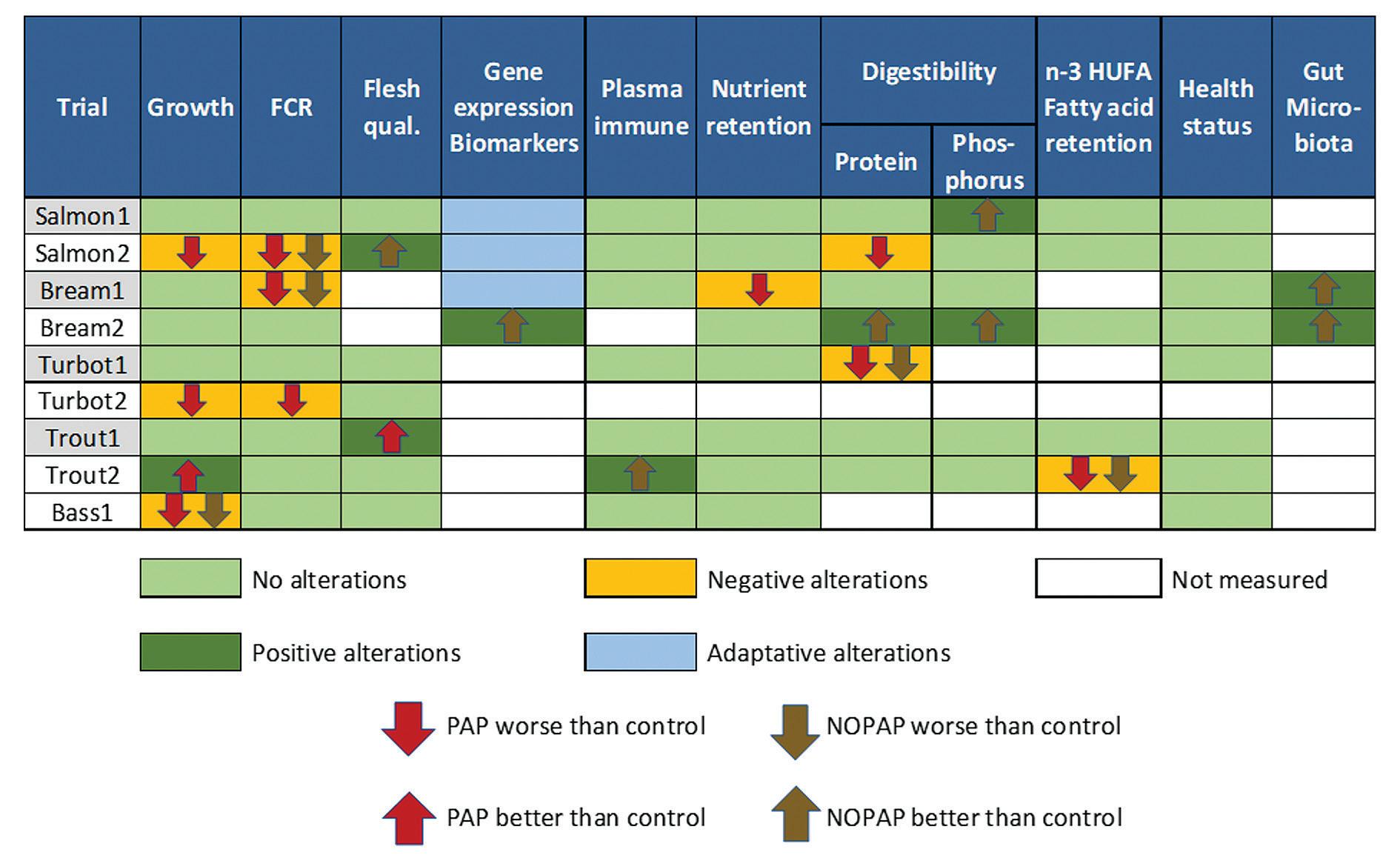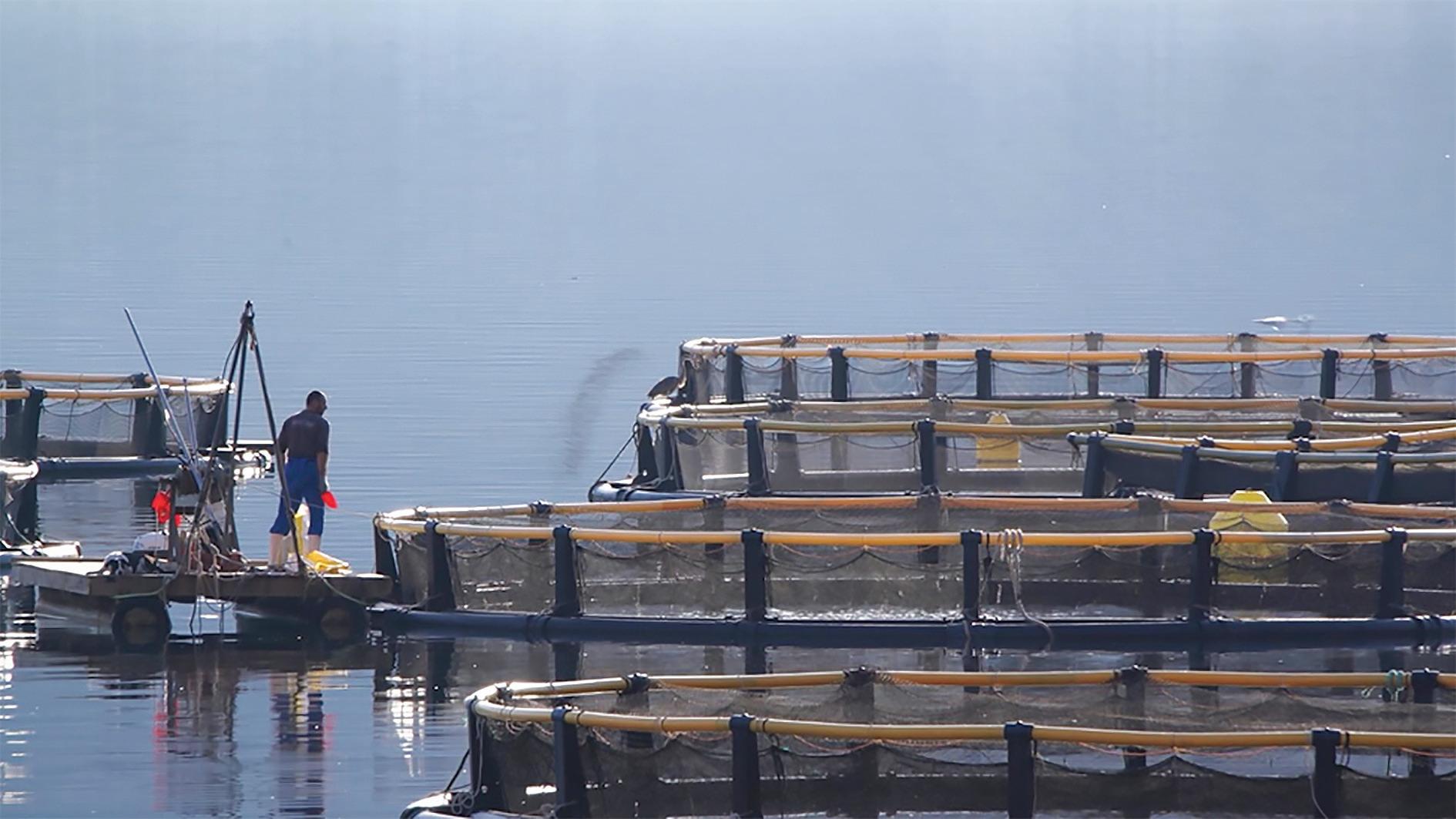
5 minute read
Eco-efficient aquafeeds using emergent ingredients
G.V. Pereira, A.M. Fernandes, J. Dias, T.V. Poletto, L. Conceição, SPAROS, C. Hoerterer, J. Petereit, B. Buck, AWI, G. Micallef, GIFAS, J.A. Calduch-Giner, F. Naya-Català, M.C. Piazzon, A. Sitjà-Bobadilla, J. Pérez-Sánchez, IATS-CSIC, F. Faccenda, M. Povinelli, FEM, B. Costas, CIIMAR, J.M.O. Fernandes, Unord, J. Johansen, SHP
The GAIN project aimed to promote the eco-efficiency of aquaculture. Ensuring sustainable feed systems is indicated as one of the main issues for increasing the environmental performance of aquaculture and, therefore, taking part in the green transition. The aquafeed industry has already made very significant progress in this endeavor, through the use of plantbased ingredients, and is striving to progress further on this goal. The current shift towards land-based proteins and oils could improve the situation in the short term but may not ensure the same nutritional (e.g., n-3HUFAs) and organoleptic properties. Several emerging ingredients have been investigated for a while, although most of them were tested on a one-by-one basis. Thus, there is a need for a new generation of sustainable fish feeds specifically designed to facilitate aquaculture eco-intensification through increased circularity and resource utilization.
Figure 1. Formulation concepts and main ingredients used in GAIN trials with novel aquafeeds. FM: fishmeal; PAP: processed animal protein from farmed animals (e.g., poultry meal, feather meal and blood meal); VCP: vegetable (e.g., pea, rapeseed) protein concentrates from European origin; FPH: fish protein hydrolysates from fisheries and aquaculture byproducts (e.g., fish trimmings, heads and frames); salmon oil: byproduct from salmon farming industry.

Figure 2. Overview of how different key performance indicators were affected by the GAIN novel aquafeed formulations in the nine fish trials conducted.
GAIN designed and tested a range of novel feeds, which included emerging ingredients, i.e. insects, seaweeds, microalgae as functional ingredients, landanimal Processed Animal Proteins (PAP), fishmeal and oil from fisheries byproducts, microbial biomasses, algal oils, and Fish Protein Hydrolysates (FPH) from aquaculture byproducts. The GAIN formulation concepts are presented in Figure 1. The results of GAIN project shown in the present article comprise two years of trials (totaling nine trials) using a total of five aquaculture species with high market value: salmon, trout, turbot, seabream and seabass.
The feeds design
The diets were designed following four main concepts (Fig. 1). Formulations had to be adapted to each species based on their nutritional requirements and tolerance to the ingredients.
Results Atlantic salmon
In the salmon trials, growth performance was very similar for the diets tested. Other parameters, including health scores and intestinal mucosa status, immune defenses and oxidative status in the liver, were also similar. Gene expression in head kidney and liver showed adaptative alterations, suggesting fish have reached a new allostatic balance after an adaptation period.
In short, feed formulations such as NOPAP and PAP are likely viable options to support accelerated growth, good health, and good FCR in Atlantic salmon. However, good results will depend on the high protein digestibility of the chosen ingredients. Moreover, positive results on consumer perception may arise due to improvements in flesh quality, following results of a 100 consumers test panel.
Gilthead seabream
In a first seabream trial, the feed conversion ratio (FCR) was worse in PAP and NoPAP diets, and this may be related to lower protein retention. This trial suggests that fish fed with a NoPAP diet show a slight improvement of innate immunity. Furthermore, mucosal mapping™ results agree with the above results, where the fish fed with NoPAP and MIX diets presented
Figure 3. Cage feeding of Atlantic salmon at GIFAS (Norway) during the GAIN project.

higher values of barrier status compared to the PAP diet. This result is also supported by the gene expression profile of the head kidney.
In a second seabream trial, the NoPAP diet supplemented with a gut modulating additive regulated the expression of several genes, showing the capacity to reduce the risk of oxidative stress and promote an antiinflammatory response. In fact, this diet may promote immune competence, and no increased susceptibility in a challenge to an intestinal parasite was observed. Thus, a formulation such as NoPAP, devoid of fishmeal, containing an array of alternative protein sources and 50% of the fish oil replaced with a mix of salmon and algae oils, seems to be a valuable option to support growth, good health, and FCR in seabream.
Turbot
Turbot juveniles fed GAIN diets showed good growth and FCR. Further, plasma immune parameters and nutrient retention were unaffected, despite lower protein digestibility in PAP and NoPAP diets compared to control.
Moreover, a feed formulation based on 28% of a lower quality fishmeal and alternative protein sources and replacing 50% of the fish oil by a mix of salmon, algae and rapeseed oils, seems to be a valuable formulation for turbot in the grow-out phase.
Rainbow trout
Feed formulations such as NoPAP and PAP, devoid of fishmeal, containing an array of alternative protein sources, are valuable options to support accelerated growth, good health, and very good FCR in rainbow trout. Moreover, perception in terms of flesh quality was good as evaluated by a panel of 100 consumers.
Conclusions
In general terms, it seems trout was the one species that accepted new formulations the best, and turbot was the one that accepted them the worst. Overall, NoPAP diets appear to have better results for all fish species tested during this project. However, the PAP concept seems to be also valid and the less positive results in some species are likely to have to do more with protein digestibility of some batches of ingredients than the PAP concept itself. Moreover, results on sensory evaluation for salmon, trout and seabass suggest that the novel formulations tested would be well accepted by the consumer. In short, GAIN feed formulations, including ingredients using aquaculture and fisheries side-streams, and other emerging ingredients adhering to circular economy principles, are viable options for eco-efficient European fish farming, especially once costs of emerging ingredients become price-competitive, and renewable energies are used to produce them. Watch GAIN videos on novel eco-efficient fish feeds and GAIN outcomes.
More information: Gabriella Pereira
Researcher SPAROS E: GabriellaPereira@sparos.pt










